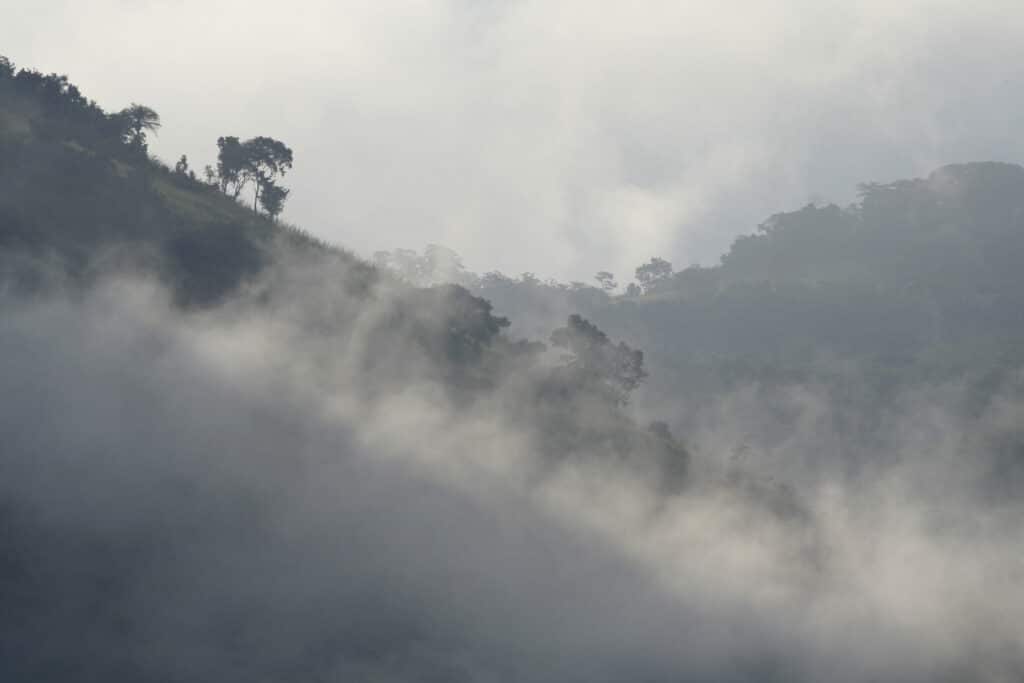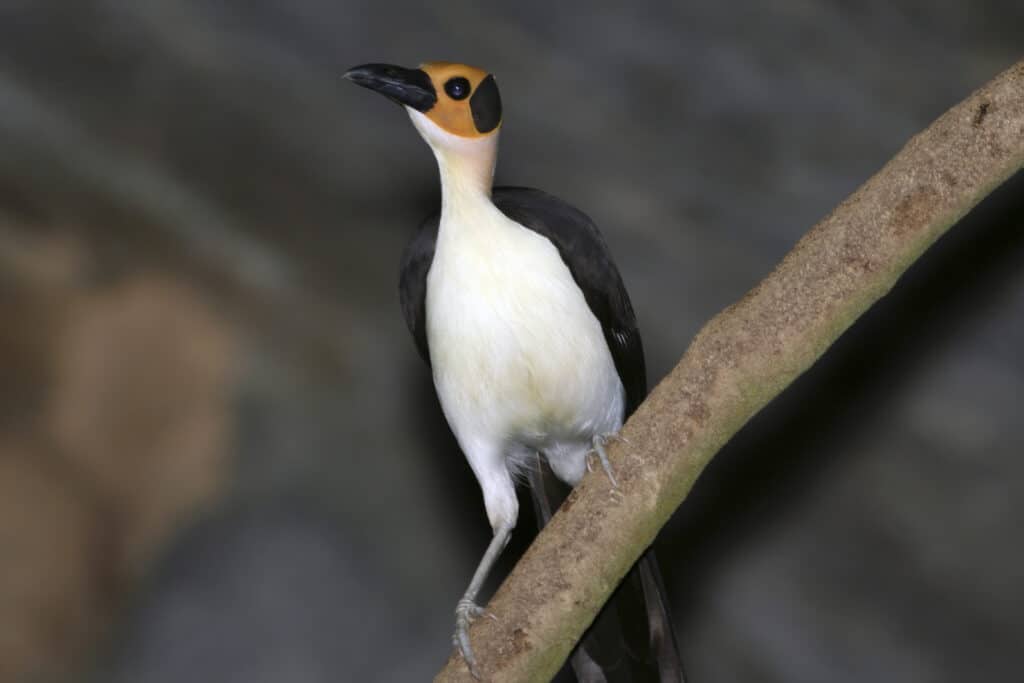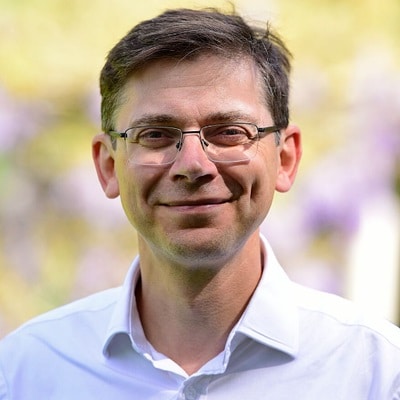A 10-point plan for the restoration revolution

Why the UN Decade on Ecosystem Restoration has to be more than a catchphrase. It must be the catalyst for transformational change of our economy, of our food and energy systems, and of ourselves.
Martin Harper
The sun had yet to rise and we had been walking silently in the forest for 45 minutes. As we approached a rocky outcrop, Patrick Douda, brilliant birder and our guide for the morning, waved at us to be still and pointed to the small nest, made of mud, stuck to the side of the rock. Peering over the top of the nest was a White-necked Rockfowl Picathartes gymnocephalus – made famous by David Attenborough in his 1955 Zoo Quest to West Africa. I carefully raised my camera but only managed a photo of an empty nest, because the bird had already spotted us and disappeared into the forest, never to be seen again.
The White-necked Rockfowl is the pin-up bird for Gola National Park in Sierra Leone, and one of more than 60 other threatened species in the park. It is part of the Greater Gola landscape which straddles the Liberian border and is one of the largest remnants of the Upper Guinean forest – itself one of the world’s 35 Global Biodiversity Hotspots. I was visiting to see the work that the RSPB (BirdLife in the UK) had been doing to protect the forest with the Liberian and Sierra Leone governments, local communities and local BirdLife Partners the Conservation Society of Sierra Leone and the Society for the Conservation of Nature in Liberia.
The RSPB and BirdLife have been working in Gola for more than 30 years, through civil wars, Ebola and now, of course, the COVID-19 pandemic. The vision is to create a trans-boundary peace park which protects the incredible biodiversity of the forest, supported by local communities who live and work in harmony with the forest. More than that, we want and need Gola to be an inspiration for how to protect and restore forests across the region. Carbon financing, a sustainable supply chain of forest-friendly chocolate and an application of community forest concepts are just some of the interventions that have been key to success.
There is a lot to learn from Gola and from many other projects led by my former employer, the RSPB. In my 17 years with the society, I was privileged to work alongside people who strived tirelessly with partners to protect and restore a huge range of habitats and species, from the blanket bogs of the Scottish Flow Country and the heathlands of Purbeck in southern England to the lowland rainforest of Sumatra and the seabirds of Gough Island in the South Atlantic.
“What will it take for the 2020s to be remembered as the decade where we turned the tide and restored nature?”Martin Harper, Regional Director, BirdLife Europe & Central Asia

I have now started my new job as Regional Director for BirdLife International in Europe & Central Asia. I join a small but determined team that supports partners in 46 countries (from Iceland to Kazakhstan and in all EU countries), supported by two million citizens who play their part in tackling the emergency. In support of our recent #RestoreNature campaign, we have been profiling a huge range of projects that our partners have led to restore nature – from the islands of Greece to the grasslands of Belgium and from the Spanish wetlands to the Georgian steppes. As with the RSPB examples, these demonstrate that conservation is not just about documenting decline: it is about making things better.
The UN Decade on Ecosystem Restoration was officially launched on World Environment Day on 5 June. We are already facing a nature and climate emergency and the window of opportunity to prevent catastrophic consequences is rapidly closing, so many think that this is the crucial decade – so we are the generation that must act.
That’s why the UN Decade has to be more than just a good catchphrase. It must be the catalyst for transformational change of our economy, of our food and energy systems, of ourselves. In short, we have to:
Stop the rot by reducing the growing pressures on nature driven by a model of economic growth that is dependent on exploitation of the natural environment.
Protect the best by ensuring that at least 30% of land and sea are well protected and managed for nature by the end of the decade.
Restore the rest by taking action to put back what we have lost, which means a massive drive in habitat restoration so that 15% of new habitat is created to provide more space for nature.
Yet, action by NGOs will never be enough: we need governments to act as if we are in an emergency and businesses to recognise that they need to change. So my final point is this: keep going and don’t give up. We all need to be at our best this coming decade, so take inspiration from nature and roll up your sleeves. By 2030, we want and need BirdLife to be leading the world in restoring nature. We have the knowledge and experience to share and inspire. We have the responsibility to act. But for success to happen, governments, businesses and civil society all need to step up. BirdLife is up for it: are you?
How to drive a revolution in nature restoration:
1. Agree ambitious global deals for nature and climate change at the two UN summits scheduled at the end of 2021.
2. Translate targets for nature’s recovery into domestic law as is currently being proposed by the European Union and UK Government.
3. Use maps to identify priority areas for protection or restoration which will deliver benefits for wildlife, for climate and for people. These maps can also help reconcile the needs of people and wildlife.
4. End perverse subsidies that harm nature, for example by overhauling agriculture policy and reforming agriculture incentives to reward wildlife[1]friendly farming, ending fossil fuel subsidies and ensuring all overseas development assistance support rather than undermine environmental protection objectives.
5. Influence private sector investment to help rather than hinder efforts to tackle the nature and climate emergencies, for example by being transparent to investors and consumers about the impact of different commercial activities.
6. Grow public sector finance for nature to drive more restoration efforts.
7. Develop an ‘industrial’ strategy for nature conservation by supporting the skills and capacity needed by institutions and civil society organisations to grow their impact.
8. Signal to businesses that they need to change – their business models in 2030 must be very different to what they are today. Early movers to more sustainable practices, such as regenerative agriculture or renewable energy in harmony with nature, should secure market advantage because their approach must become the norm by 2030. The sooner that businesses acknowledge they need to change, the better for all of us.
9. Harness the public anger and passion about the state of the planet that already exists and create an unstoppable movement clamouring for change.
10. Share best practice about how to restore wildlife at scale. From our practical experience, the recipe for success includes: forging the right partnership to develop a shared vision, exceptional planning, mobilising funding, delivering the plan, evaluating impact and sustaining success.
Stay up to date
Sign up to receive the latest bird conservation news. You’ll also receive updates about our projects, science and other ways to get involved including fundraising.
Thank you for your support, we are committed to protecting your personal information and privacy. For more information on how we use your data, please see our Privacy Policy. You can unsubscribe from emails at any time by using the link in the footer of any email from us.


